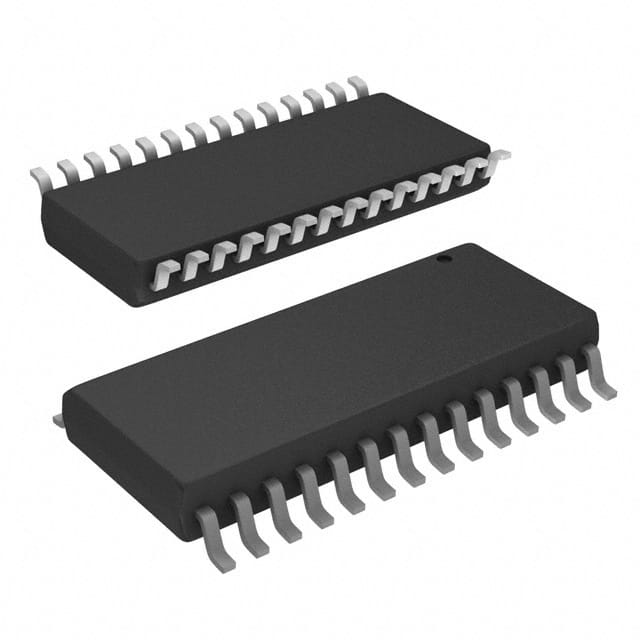Z8F021AHJ020EC00TR
Basic Information Overview
- Category: Microcontroller
- Use: Embedded systems, control applications
- Characteristics: High-performance, low-power consumption, small form factor
- Package: 32-pin LQFP (Low-profile Quad Flat Package)
- Essence: Integrated circuit for controlling and managing electronic devices
- Packaging/Quantity: Tape and reel packaging, quantity varies based on manufacturer
Specifications
- Architecture: Harvard architecture
- CPU Speed: Up to 20 MHz
- Flash Memory: 16 KB
- RAM: 1 KB
- Operating Voltage: 2.7V to 3.6V
- I/O Pins: 28
- Timers/Counters: 2 x 16-bit timers, 1 x watchdog timer
- Communication Interfaces: UART, SPI, I2C
- ADC: 10-bit ADC with 8 channels
- PWM: 4 channels
- Operating Temperature Range: -40°C to +85°C
Detailed Pin Configuration
The Z8F021AHJ020EC00TR microcontroller has a total of 32 pins. The pin configuration is as follows:
| Pin Number | Pin Name | Function | |------------|----------|----------| | 1 | VDD | Power Supply Voltage | | 2 | P0.0 | General Purpose I/O | | 3 | P0.1 | General Purpose I/O | | ... | ... | ... | | 31 | P1.6 | General Purpose I/O | | 32 | P1.7 | General Purpose I/O |
Functional Features
- High-performance microcontroller suitable for various embedded control applications
- Low-power consumption for energy-efficient designs
- Compact size allows for integration into space-constrained devices
- Harvard architecture provides separate instruction and data memory spaces for improved performance
- Multiple communication interfaces enable easy connectivity with other devices
- Built-in ADC and PWM modules for analog signal processing
- Timers and counters for precise timing and event management
Advantages and Disadvantages
Advantages
- High-performance capabilities suitable for demanding control applications
- Low-power consumption extends battery life in portable devices
- Compact form factor allows for integration into small-sized products
- Versatile communication interfaces simplify device connectivity
- Built-in analog features eliminate the need for external components in some applications
Disadvantages
- Limited flash memory and RAM may restrict the complexity of applications
- 32-pin package may not provide enough I/O pins for certain projects
- Operating temperature range may not be suitable for extreme environments
Working Principles
The Z8F021AHJ020EC00TR microcontroller operates based on the Harvard architecture, where separate instruction and data memory spaces are utilized. It executes instructions fetched from the flash memory and stores data in the RAM. The CPU processes these instructions and interacts with various peripherals through I/O pins and communication interfaces. The microcontroller's functional features, such as timers, counters, ADC, and PWM, enable it to perform tasks like precise timing, analog signal processing, and communication with external devices.
Detailed Application Field Plans
The Z8F021AHJ020EC00TR microcontroller finds applications in various fields, including: 1. Industrial automation: Control systems for machinery and equipment. 2. Consumer electronics: Remote controls, smart home devices, and wearable technology. 3. Automotive: Engine control units, dashboard displays, and infotainment systems. 4. Medical devices: Patient monitoring systems, diagnostic equipment, and medical instruments. 5. Internet of Things (IoT): Connected devices, sensor networks, and data acquisition systems.
Detailed and Complete Alternative Models
- Z8F042AHJ020EG00TR: Similar microcontroller with increased flash memory (32 KB) and RAM (2 KB).
- Z8F081AHH020SG00TR: Microcontroller with higher pin count (44 pins) and additional features like a real-time clock and more I/O options.
- Z8F1680AH020SG00TR: Advanced microcontroller with larger flash memory (128 KB), more I/O pins, and enhanced communication interfaces.
Note: The above alternative models are just a few examples, and there are several other alternatives available in the market.
This encyclopedia entry provides an overview of the Z8F021AHJ020EC00TR microcontroller, including its basic information, specifications, pin configuration, functional features, advantages and disadvantages, working principles, application field plans, and alternative models.
Lista 10 Vanliga frågor och svar relaterade till tillämpningen av Z8F021AHJ020EC00TR i tekniska lösningar
Sure! Here are 10 common questions and answers related to the application of Z8F021AHJ020EC00TR in technical solutions:
Q: What is the Z8F021AHJ020EC00TR microcontroller used for? A: The Z8F021AHJ020EC00TR is a microcontroller commonly used in various technical solutions, such as industrial automation, consumer electronics, and automotive applications.
Q: What is the maximum clock frequency supported by the Z8F021AHJ020EC00TR? A: The Z8F021AHJ020EC00TR supports a maximum clock frequency of 20 MHz.
Q: How much flash memory does the Z8F021AHJ020EC00TR have? A: The Z8F021AHJ020EC00TR has 16 KB of flash memory for program storage.
Q: Can I expand the memory of the Z8F021AHJ020EC00TR? A: No, the Z8F021AHJ020EC00TR does not support external memory expansion.
Q: What peripherals are available on the Z8F021AHJ020EC00TR? A: The Z8F021AHJ020EC00TR includes features like UART, SPI, I2C, GPIO, timers, and analog-to-digital converters (ADCs).
Q: Does the Z8F021AHJ020EC00TR support real-time operating systems (RTOS)? A: Yes, the Z8F021AHJ020EC00TR can be used with RTOS implementations, allowing for multitasking and efficient resource management.
Q: Can I use the Z8F021AHJ020EC00TR for motor control applications? A: Yes, the Z8F021AHJ020EC00TR has built-in PWM modules that make it suitable for motor control applications.
Q: What development tools are available for programming the Z8F021AHJ020EC00TR? A: Zilog provides a comprehensive Integrated Development Environment (IDE) called ZDS II, which supports programming and debugging of the Z8F021AHJ020EC00TR.
Q: Is the Z8F021AHJ020EC00TR suitable for low-power applications? A: Yes, the Z8F021AHJ020EC00TR offers various power-saving modes, making it suitable for battery-powered or energy-efficient designs.
Q: Can I use the Z8F021AHJ020EC00TR in harsh environments? A: The Z8F021AHJ020EC00TR is designed to operate in a wide temperature range and can withstand moderate levels of shock and vibration, making it suitable for some harsh environments.
Please note that these answers are general and may vary depending on specific application requirements and implementation details.


